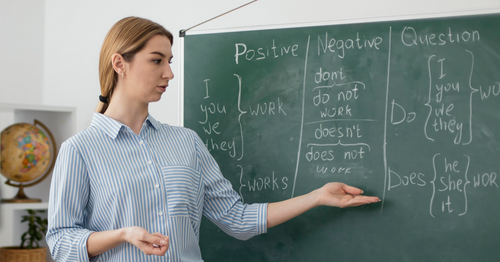As an educator, one of the most important tasks is to motivate learners and make them interested in the learning process. Unfortunately, not all students are naturally motivated, and sometimes even the most engaging lessons and materials won't get them excited about learning. But with the right motivational strategies, you can help students stay motivated and engaged in the classroom.
For teachers looking for additional support in motivating their students, Allright.com provides expert guidance on how to keep students engaged and motivated during class.
1. Set goals
Setting goals can help students focus on what they want to achieve and create a roadmap to get there.
When setting goals, it's significant to make them (SMART):
- Specific,
- Measurable,
- Achievable,
- Relevant,
- Time-bound.
For example, instead of saying “I want to do better in English,” a SMART goal would be “I want to increase my English grade by 10% by the end of the semester by completing all my homework and studying for at least an hour every day.”
2. Use positive reinforcement
Students might be highly motivated by positive reinforcement. Try to catch children engaging in positive conduct and compliment them on it rather than focusing on their negative actions. Simply saying "good job" or "well done" can make a big difference. Incentives like extra credit or small rewards can also be given to students who continuously display positive behavior.
3. Use technology
Technology can be a great motivator for students, especially for those who are tech-savvy. Use educational apps, online games, or digital platforms to make learning more engaging and interactive.
For example, Kahoot! is a popular online platform that allows you to create quizzes and games that students can play on their smartphones or tablets.
4. Offer varied experiences
Not every student will react the same way to a lesson. For some people, firsthand encounters may be the finest. Others may enjoy working in groups or reading books privately. Mix up your classes so that students with diverse interests will each have time concentrating on the things they like best. This will help to keep all students motivated. Students will be more engaged and attentive if you do this.
5. Use positive competition
Competition among students isn't always a bad thing; in certain cases, it might inspire them to put up more effort and strive for academic excellence. Develop a positive atmosphere of competitiveness in your classroom by providing opportunities for students to 'show off' their knowledge or abilities, such as through group activities that are connected to the studied material.
6. Offer rewards
Everyone likes getting rewards, and offering your students the chance to earn them is an excellent source of motivation. Activities like pizza parties, watching movies, or even something as simple as a sticker on paper can make students work harder and really aim to achieve best results. Consider the personalities and needs of your students to determine appropriate rewards for your class.
7. Give students responsibility
An excellent method to create a feeling of community and motivate students is to give them duties in the classroom. The majority of students will view their work in class as a privilege rather than a chore, and they will put forth great effort to make sure that they and other students are meeting expectations. In order to make each student feel important and valued, it can be helpful to let them take turns leading activities or providing assistance.
8. Allow students to work together
While not all students will jump at the chance to work in groups, many will find it fun to try to solve problems, do experiments, and work on projects with other students. Social interaction can get them excited about things in the classroom, and students can motivate one another to reach a goal. But in order to prevent some kids from doing more work than others, teachers must make sure that groups are fair and balanced.
9. Give praise when earned
There may be no other form of motivation that works quite as well as encouragement. Teachers should publicly praise students for their accomplishments and outstanding efforts.
10. Offer real-world connections
When students can connect what they are learning to real-life situations, they become more engaged and motivated. Try to find ways to make connections between the curriculum and the real world, whether it’s by incorporating current events, bringing in guest speakers, or even going on field trips. Students will be more motivated to learn when they can see how it applies to the world beyond the classroom.
11. Encourage creativity
Allowing students to express their creativity can be a powerful motivator. Students who feel that their ideas and opinions are valued will be more likely to be invested in their work. Give students opportunities to be creative, whether it’s by designing their own projects or incorporating art into lessons. This can help them stay motivated and engaged.
12. Be enthusiastic
The teacher's own enthusiasm for the subject is one of the most crucial elements in motivating students.
It can spread if the teacher is passionate and excited about what they are teaching. If students see that their teacher is enthusiastic about the subject, they will be more driven to learn.
Motivating students can be challenging, but implementing some of these strategies can help to keep them engaged and invested in their work. By offering varied experiences, using constructive competition, offering rewards, giving students responsibility, allowing them to work together, giving praise when earned, tracking progress, making things fun, providing real-world connections, encouraging creativity, and being enthusiastic, teachers can create a motivational classroom environment.
Whether you're a seasoned teacher or just starting out, Allright.com can provide you with the tools and resources you need to inspire and motivate your students to learn.








